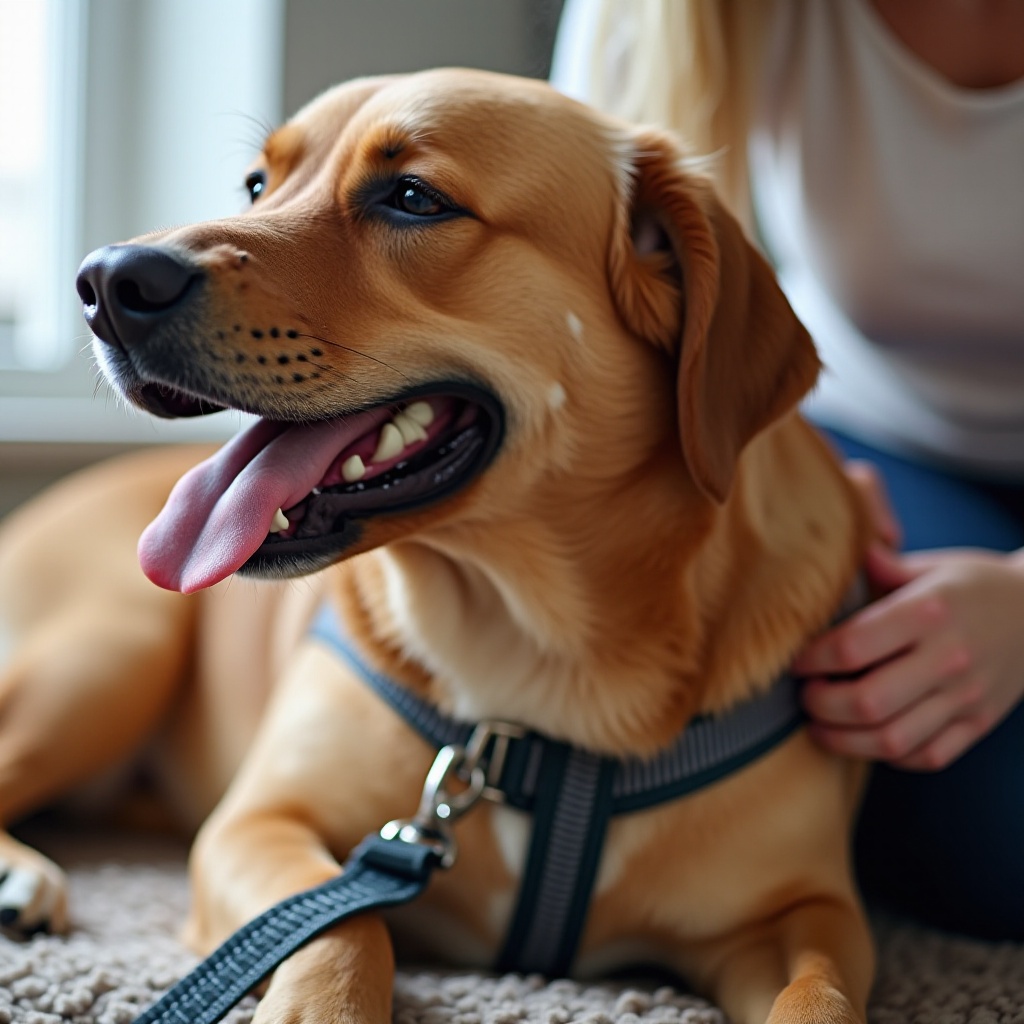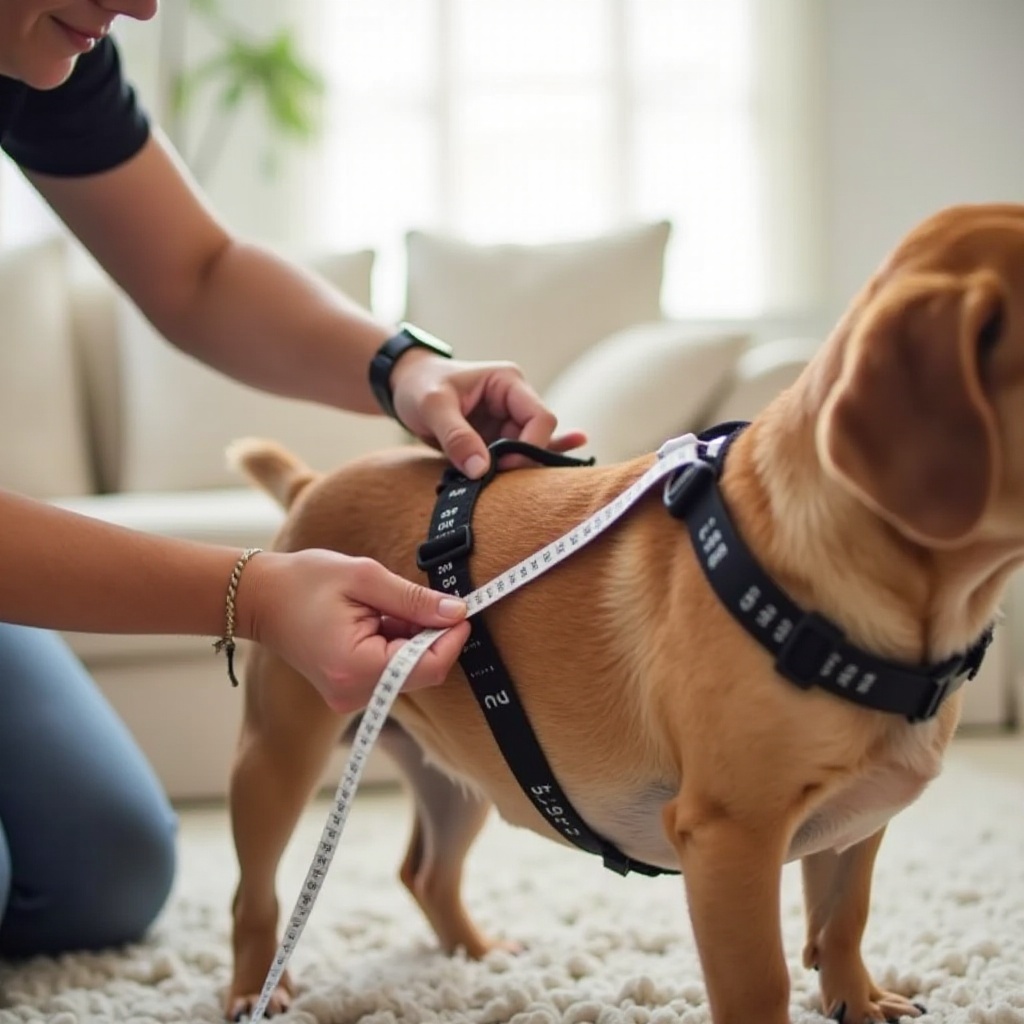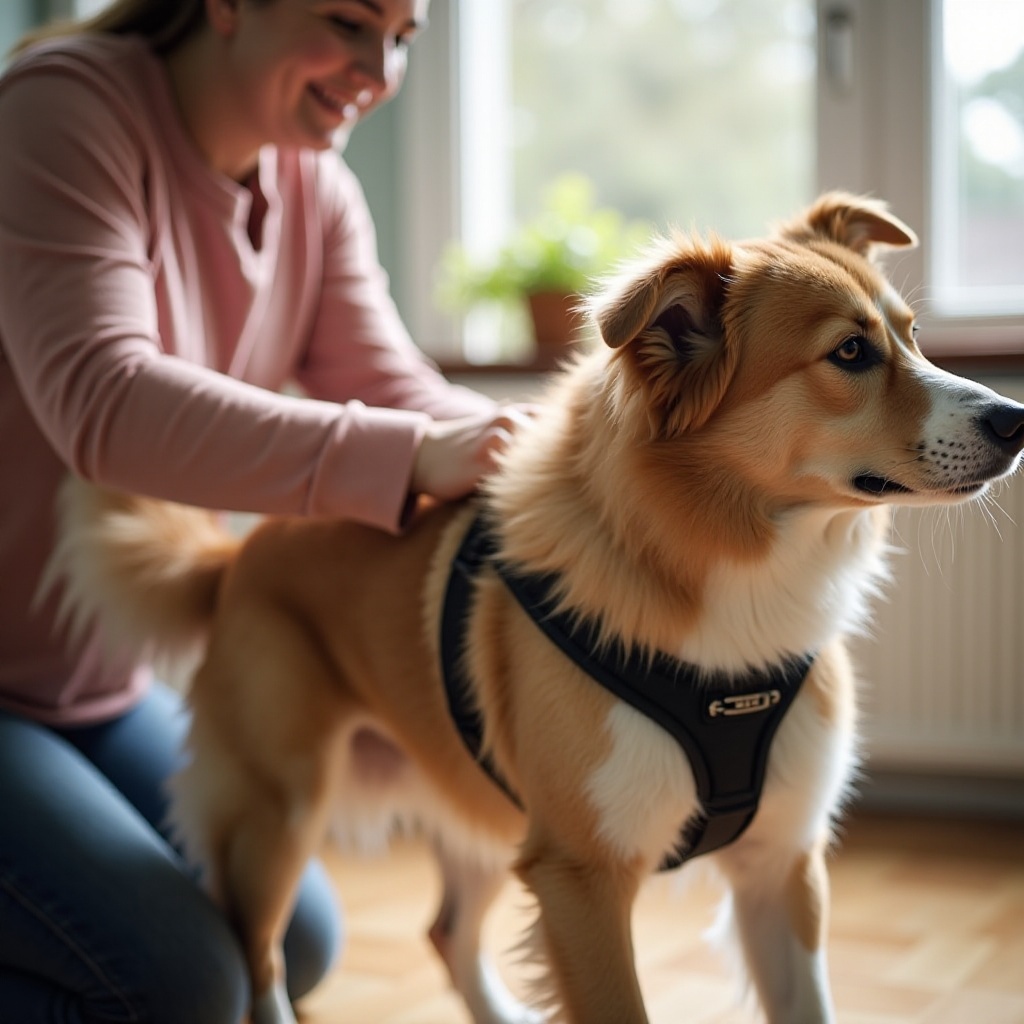Introduction
Applying a dog harness can be a daunting task for many pet owners, especially those new to dog walking. Ensuring that the harness is applied correctly is crucial for your dog’s comfort and safety during walks. This comprehensive guide will help you understand the different types of harnesses, choose the right one for your dog, measure your dog accurately, and apply it correctly. By following these steps, you can make the process easy and stress-free for both you and your furry friend.

Understanding Different Types of Dog Harnesses
Before you start the process, it’s important to understand the different types of dog harnesses available. Each type serves a specific purpose and is suitable for different dog sizes and behaviors:
- Back-Clip Harness: This is the most common type of harness, with a D-ring on the back for leash attachment. It’s ideal for smaller dogs and those that walk well without pulling.
- Front-Clip Harness: The D-ring is located at the front, which helps to control dogs that tend to pull. This type is suitable for training purposes.
- Dual-Clip Harness: This versatile harness has both front and back leash attachment points. It provides greater control and flexibility, making it suitable for all types of dogs, especially those in training.
Understanding these types will help you decide which harness best fits your dog’s needs and behavior.
Choosing the Right Harness for Your Dog
Selecting the right harness is essential for your dog’s comfort and safety. Choosing between the different options ensures you meet your dog’s walking needs effectively.
- Size: Make sure the harness fits your dog’s size and shape. It should be snug but not too tight, allowing you to fit two fingers between the harness and your dog’s body.
- Material: Choose a material that is durable and comfortable for your dog. Padded harnesses can provide extra comfort, especially for dogs with sensitive skin.
- Function: Consider your dog’s behavior on walks. If your dog pulls, a front-clip or dual-clip harness may be more effective. For dogs that walk calmly, a back-clip harness will suffice.
- Ease of Use: Look for a harness that is easy to put on and take off. This will make your walks more enjoyable and less stressful for your dog.
By considering these factors, you’ll ensure that you select a harness that meets both your needs and your dog’s.
How to Measure Your Dog for a Harness
Accurate measurements are key to finding the perfect fit for your dog’s harness. Follow these steps to measure your dog effectively:
- Neck Measurement: Use a tape measure to measure the circumference of your dog’s neck. Take the measurement at the base where the neck meets the shoulders.
- Chest Measurement: Measure the widest part of your dog’s chest, just behind the front legs. This is the most crucial measurement for a harness.
Once you have these measurements, refer to the harness manufacturer’s sizing chart to find the best fit for your dog.

Step-by-Step Guide to Applying a Dog Harness
Now that you have the right harness, it’s time to put it on your dog. Here is a step-by-step guide for different types of harnesses:
Applying a Back-Clip Harness
- Lay the Harness Flat: Ensure the straps are not twisted.
- Identify the Neck Strap: Place the neck strap over your dog’s head.
- Adjust the Straps: Snap the buckles behind the front legs and adjust the straps for a snug fit.
- Attach the Leash: Clip the leash to the D-ring on the back of the harness.
Applying a Front-Clip Harness
- Place the Harness on the Ground: Let your dog step into the harness.
- Raise the Harness: Bring the straps up and around your dog’s body.
- Secure the Buckles: Fasten the buckles behind the front legs.
- Adjust for Fit: Tighten or loosen the straps as needed.
- Attach the Leash: Clip the leash to the D-ring at the front of the harness.
Applying a Dual-Clip Harness
- Place Over the Head: If it has a neck strap, slide it over your dog’s head.
- Position Correctly: Ensure that both D-rings are positioned properly, one at the front and one on the back.
- Fasten the Buckles: Clip the buckles behind the legs.
- Adjust the Fit: Make necessary adjustments for a snug but comfortable fit.
- Attach the Leash: Clip the leash to the desired D-ring based on your control needs.
Tips for Getting Your Dog Used to a Harness
Introducing a harness to your dog can take some getting used to. Here are a few tips:
- Positive Reinforcement: Use treats and praise when putting the harness on.
- Gradual Introduction: Let your dog wear the harness for short periods initially, gradually increasing the duration.
- Comfort First: Ensure the harness is comfortable and properly adjusted to avoid causing any discomfort or anxiety.
By following these tips, your dog will become more accustomed to the harness and associate it with positive experiences.
Common Mistakes to Avoid
To ensure your dog’s safety and comfort, avoid these common harness application mistakes:
- Incorrect Sizing: A harness that’s too tight or too loose can cause discomfort or allow your dog to escape.
- Twisted Straps: Always check that the straps are not twisted during application.
- Ignoring Adjustments: Regularly check and adjust the harness to accommodate your dog’s growth or changes in weight.
Avoiding these mistakes will help ensure your dog’s safety and comfort during walks.

Conclusion
Applying a dog harness correctly is essential for your dog’s safety and comfort. By understanding the types of harnesses, choosing the right one, measuring correctly, and following the application steps, you will ensure a positive experience for both you and your dog. With patience and consistency, your dog will soon enjoy their walks more and associate harness time with fun and adventure.
Frequently Asked Questions
How tight should a dog harness be?
A dog harness should be snug but not too tight. You should be able to fit two fingers comfortably between the harness and your dog’s body.
Can a dog wear a harness all day?
It’s not recommended for a dog to wear a harness all day. Remove the harness during rest and sleep to prevent irritation or skin issues.
What is the best harness for a dog that pulls?
A front-clip or dual-clip harness is best for a dog that pulls. These types offer better control and discourage pulling behavior.
